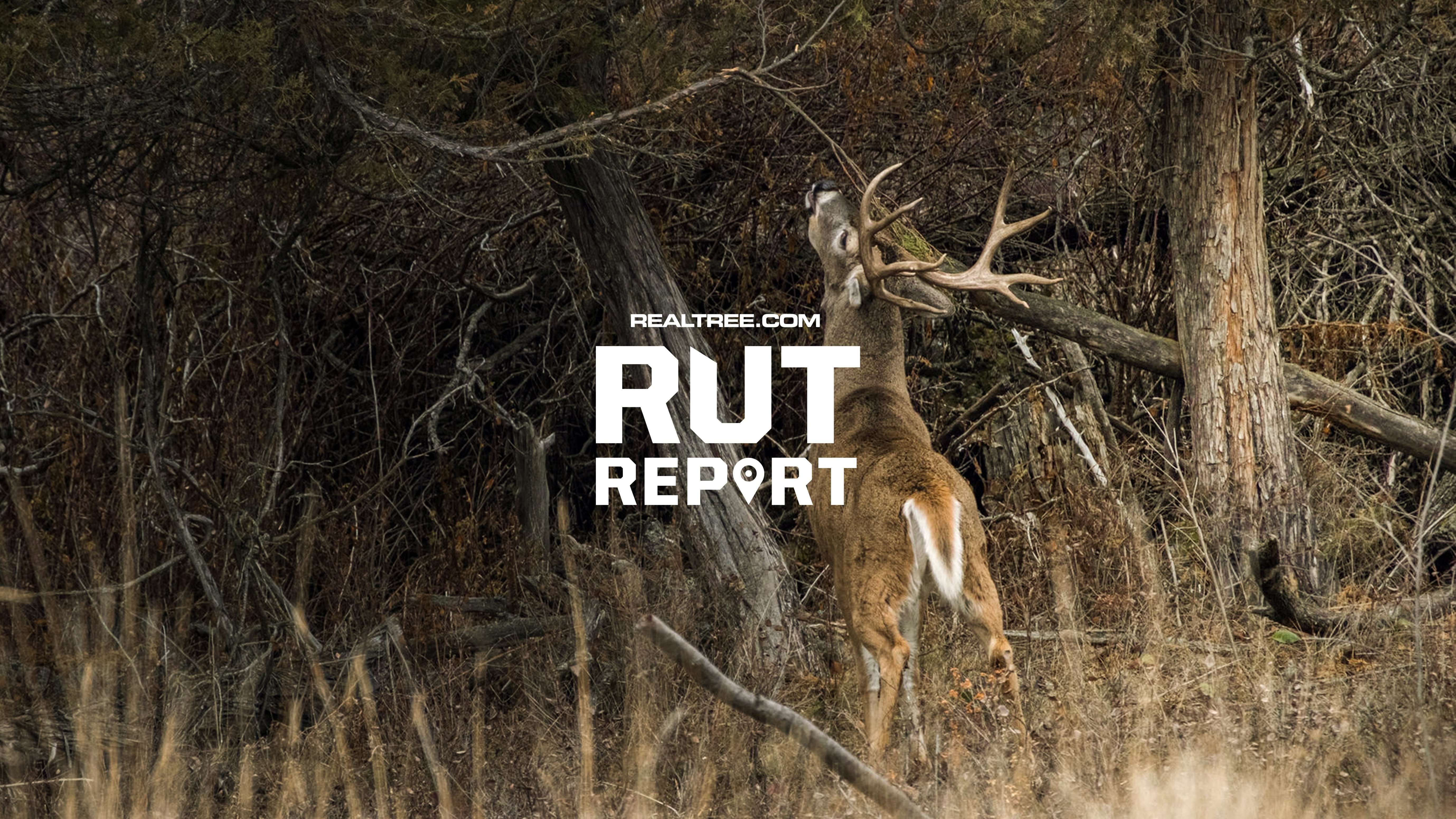Waterfowling can be extremely weather dependent, so hunt anytime you can. But historically, the days in this timeframe produce year after year

Some days are better than others for bagging ducks, so you might as well plan to hunt during traditionally productive periods. Photo by Phil Kahnke.
The premise of this article seems ridiculous. After all, if the season is open and you have time, you should go duck hunting. Life passes quickly, and you won’t get a duck dinner by sitting on the couch.
Further, let’s agree that many factors can determine duck hunting success, including weather, geographic location, hunting pressure, time of year, water conditions, food availability and more. Still, experience has proven that some phases of fall and winter, from far North to deep South, seem to consistently produce better action. And if this coming duck season plays out in traditional fashion, these are our top bets to take a sick day or blow off that family gathering.
SEPTEMBER 15
Early to mid-September marks the start of many teal and Canada goose seasons in the northern United States, and the general season is open in several Canadian provinces. And although temperatures can be hot, this is generally a great time to knock the dust off your gear and pursue birds that haven’t been hassled for months.
“I would have to say my favorite day of the season to hunt is the first day,” said Cooper Olmstead, of Habitat Flats, who guides extensively for ducks, geese and cranes in Saskatchewan. “I know this is probably cliché, but that first morning of opening day, with all of the sights, sounds, and smells, is great. It just brings back a flood of memories from past years. And also, the relief that it’s finally here. You have made it another full year, and fall and duck season are finally back.”
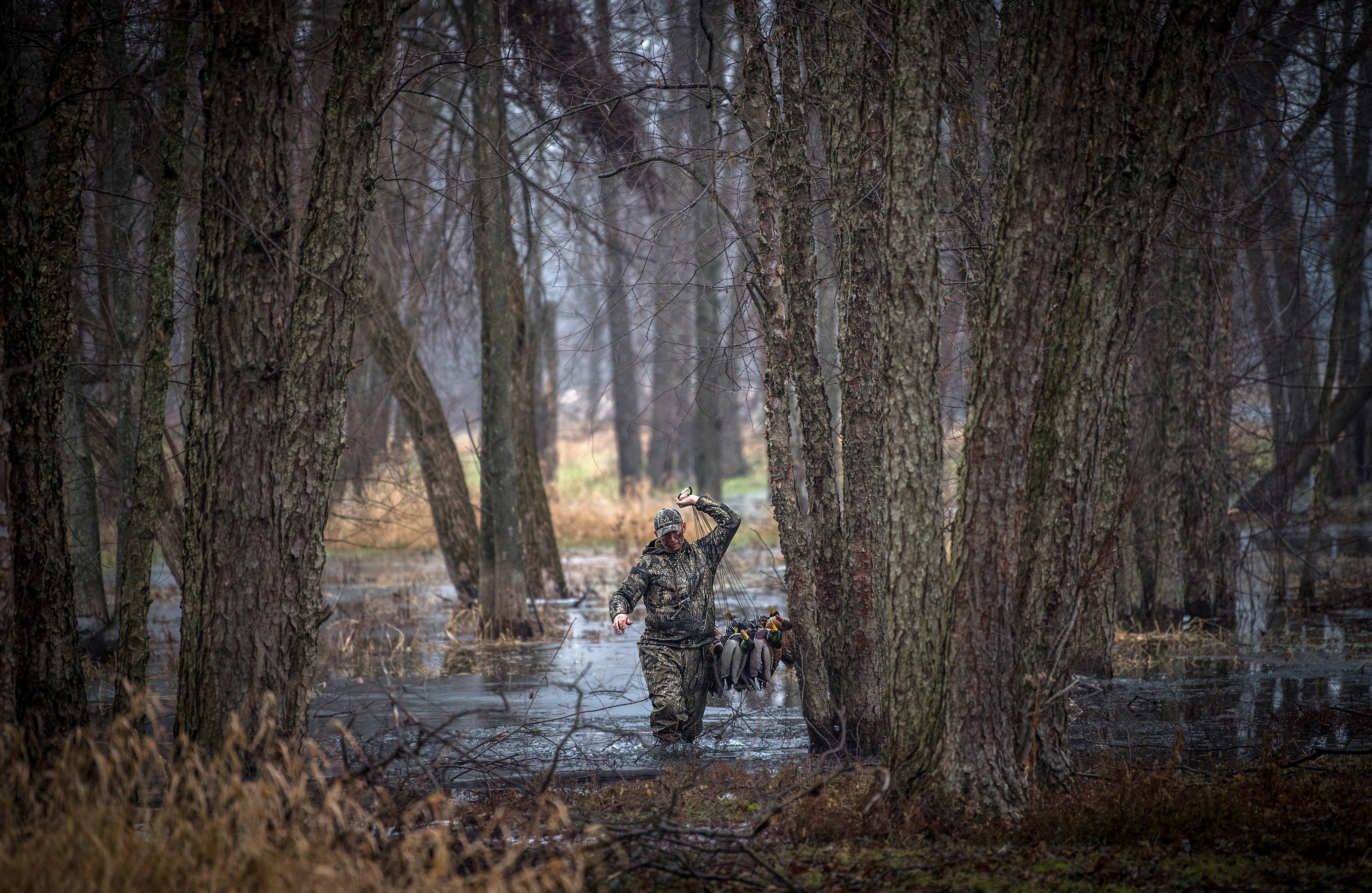
Opening morning is always a good bet for bagging birds, but you must avoid other hunters. Photo by Bill Konway.
Go-to tactic: Look for teal in shallow marshes, sloughs, backwaters or flooded fields. Throw out a few decoys — mallards work fine — and go heavy on the spinners. When chasing dry-field geese and ducks, scout hard to find a hot feed, obtain permission, and then identify the X. Set up well before light, and prioritize concealment. Hint: Natural looking cover is better. Before legal light, select a pit boss who knows how and when to call the shots.
OCTOBER 1
Traditionally, general duck seasons in Northern production states open around Oct. 1. If you’ve hunted Wisconsin’s Horicon Marsh, the Lac Qui Parle area of western Minnesota, or even Gackle, North Dakota, you know that opening day on public water can be a frustrating zoo. But when you find a decent spot with limited pressure, it can also produce some of the fastest shooting of the year. Adult ducks haven’t been shot at since Southern seasons ended in January, and young-of-the-year birds might never have seen a human being.
Don’t Miss: Breeding Duck Numbers Up by 5%
The key is to be anti-social. Avoid areas with good access — especially improved boat ramps or walking trails — no matter how promising they look. As trite as it sounds, be willing to get up earlier, work harder, and travel farther than the other guy. (This is much tougher nowadays, as everyone seemingly has a boat with a mud motor, and they often sleep overnight in those rigs.) Scout incessantly for areas other hunters might overlook or aren’t willing to access.
Go-to-tactic: Instead of setting up where you saw ducks loafing or feeding before the season, identify areas where ducks travel or congregate to escape pressure after the shooting begins. Good spots might include points on a river channel, tucked-away bays or bayous, or potholes buried deep in cattails. You might not get many classic decoying shots, but you’ll sure have opportunities.
OCTOBER 20-ISH
Northern hunters often experience a lull between the opening-weekend frenzy on local ducks and the first big migrations of autumn. But when the days become short and the first serious cold fronts sweep down from Canada, action can get hot overnight.
During this period, many calendar ducks — birds that seem to migrate more because of photoperiod than weather — are on the move. Pintails, gadwall, wigeon, greenwings, and shovelers build in numbers, along with early divers including redheads, ringnecks, and some canvasbacks and bluebills. This is a great time to hunt, as the weather typically isn’t severe, and you can get into a variety of ducks.
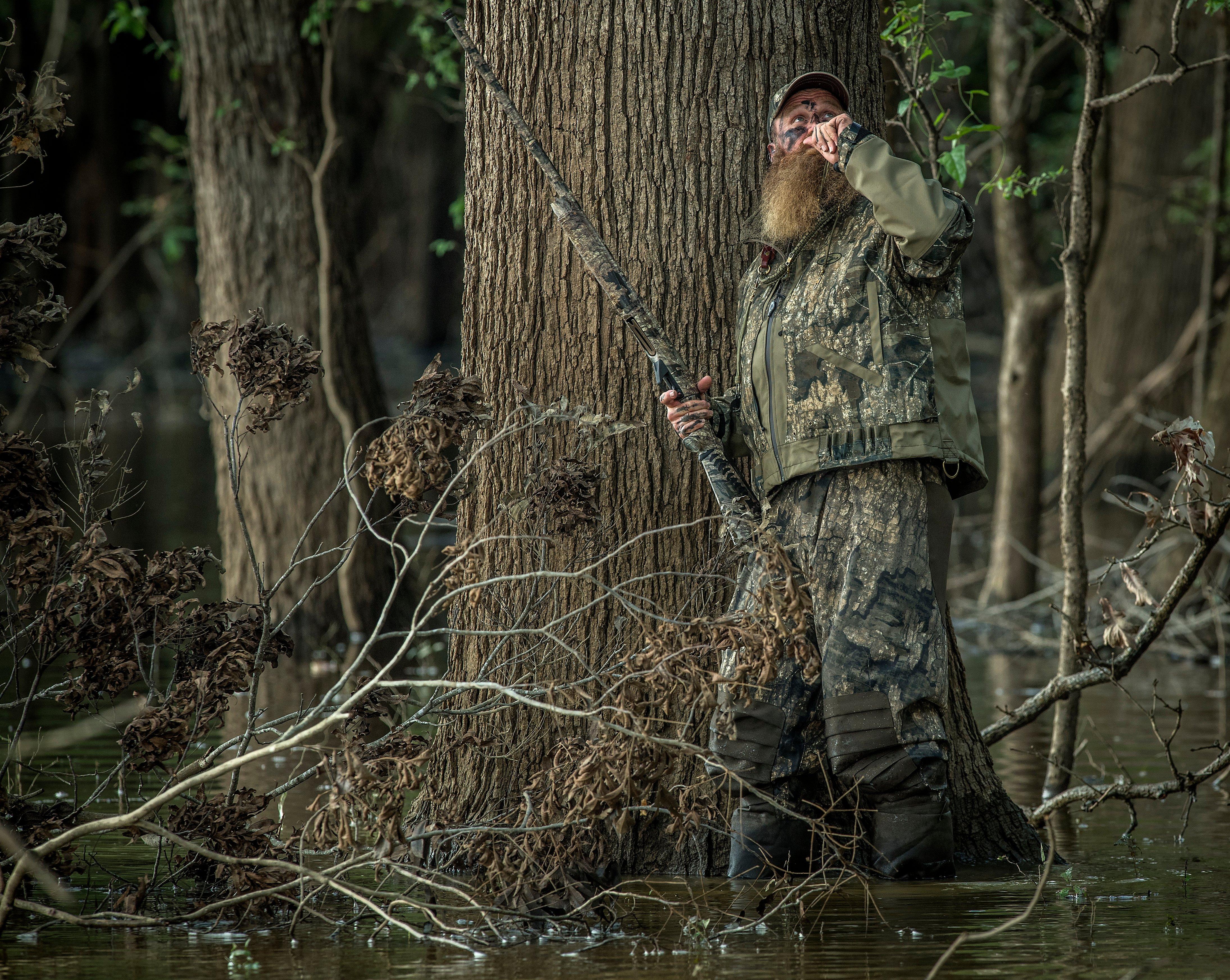
Finding a decent spot with limited pressure can be challenging on public land, but if you do, it can produce some of the fastest shooting of the year. Photo by Bill Konway.
Go-to tactic: Water hunts produce well during this phase, as many early migrants feed primarily on aquatic vegetation and invertebrates. Locate likely looking river backwaters, large marshes, prairie pothole-type lakes, or shallow impoundments, and set out a mixed spread for maximum attraction. Throw a few puddle duck blocks slightly upwind of your position, leave a generous kill hole by your hide, and then stretch a line or two of divers downwind. And focus on positively identifying ducks before you shoot, as almost anything might visit your rig.
NOVEMBER 11
Back in the day, Northern diver flights usually peaked around Halloween. Nowadays, the best action occurs a week or more later. Just ask Jeremy Dersham, of Ridge and River Running Outfitters, who guides for cans and everything else on the storied Pool 9 of the Mississippi River in southwestern Wisconsin.
“My birds can show up within a four-week window on any given year,” he said. “I’ve seen cans show up as early as Oct. 15 and as late as Nov. 15. With that being said, I’m all about long-term averages, and I love hunting canvasbacks, so historically my birds peak around Nov. 10.”
But his favorite day to hunt is Nov. 11, which holds great historical significance on the Mississippi. It’s the anniversary of the Armistice Day Storm of 1940, when a strong cold front blew through the Upper Mississippi River Valley and Great Lakes, resulting in plummeting temperatures, high winds and rain that turned to sleet and snow. Many waterfowlers on the river were trapped and perished. Some estimates say up to 85 duck hunters died in Minnesota, Wisconsin and Illinois.
“This day has special meaning to me personally due to the water I call home,” Dersham said.
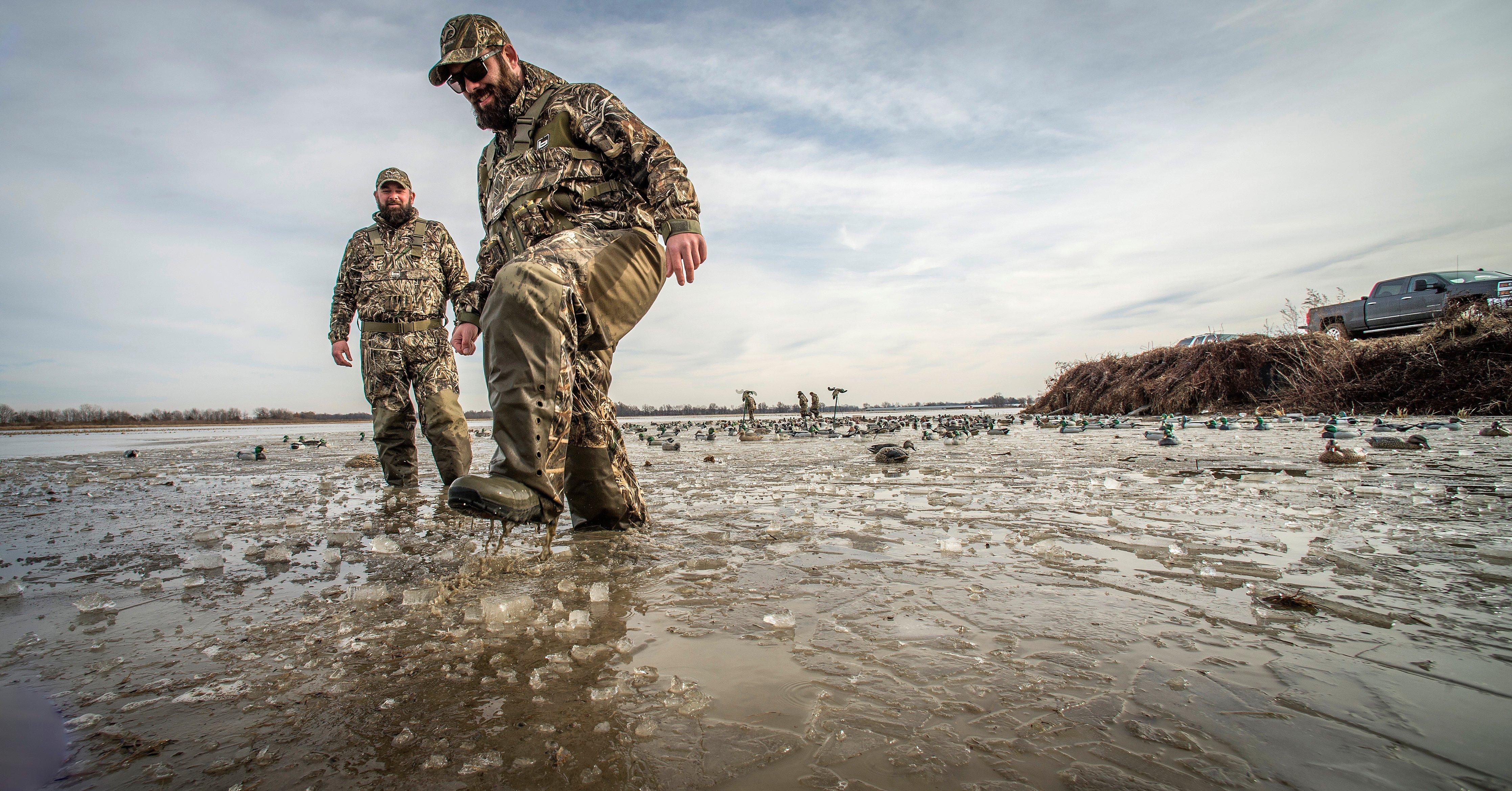
A late-December freeze concentrates ducks and geese in the remaining open water, and they can be very vulnerable to realistic setups. Photo by Bill Konway.
Go-to tactic: Big water divers demand big spreads. Dersham runs several multiple-decoy lines to form the bulk of his rig, and then augments it with a few dozen Texas-rigged divers and puddlers to break up the linear look of the lines. Typically, he sets his boat blind perpendicular to the wind so approaching birds aren’t looking right at it. His hunters then enjoy finishing and crossing shots at 20 to 30 yards.
THANKSGIVING
Tony Vandemore didn’t hesitate when asked about his No. 1 day for this season.
“My pick for 2024 is going to be Thanksgiving,” said Vandemore, owner of Habitat Flats near Sumner, Missouri. “The November full moon is the 15th, so the 28th should fall in the dark part of the moon. Traditionally, that is a fantastic time around here, with lots of mallards. Regardless of what takes place, I’ll be hunting with my family and friends Thanksgiving morning, and you can never go wrong with that.”
Don’t Miss: Duck Hunting in California
Go-to tactic: Typically during late November, freezing temperatures in the North have sent mallards and other ducks south to middle portions of the Mississippi and Central flyways. Habitat Flats is located near Swan Lake National Wildlife Refuge, which can hold up to 100,000 ducks during peak migration. And that plays right into Vandemore’s preferred style of hunting.
“My favorite hunting is running traffic in a little timber slough between the refuge and where the birds are going to feed,” he said. “The place I hunt, you won’t ever see a duck on it, but there are a lot getting over it. Decoys, loud calling, and bringing ducks into a place they don’t want to be is a really fun hunt to me. With traffic, it’s all about being on a good line and having a lot of birds over you. You aren’t going to stop them all, so the more you get over you every day, the better your chances.”
SECOND SPLIT OPENER
If you follow Rusty Creasey, you know he puts big numbers of mallards in front of clients at the famous Coca-Cola Woods Duck Club near McCrory, Arkansas. And because the club isn’t that big — 640 acres — he carefully manages hunting pressure to ensure quality gunning. Therefore, it’s no surprise that one of his favorite days occurs right after hunting reopens after Arkansas’ first season split.
“The first day of the second split is always pretty dang good,” he said. “The ducks have been hunted nine days but by then have had eight days to rest. And usually, more have migrated south, and they’ve had over a week to relax, build up and settle in. This season’s date will be Dec. 10, and it should be really good.”
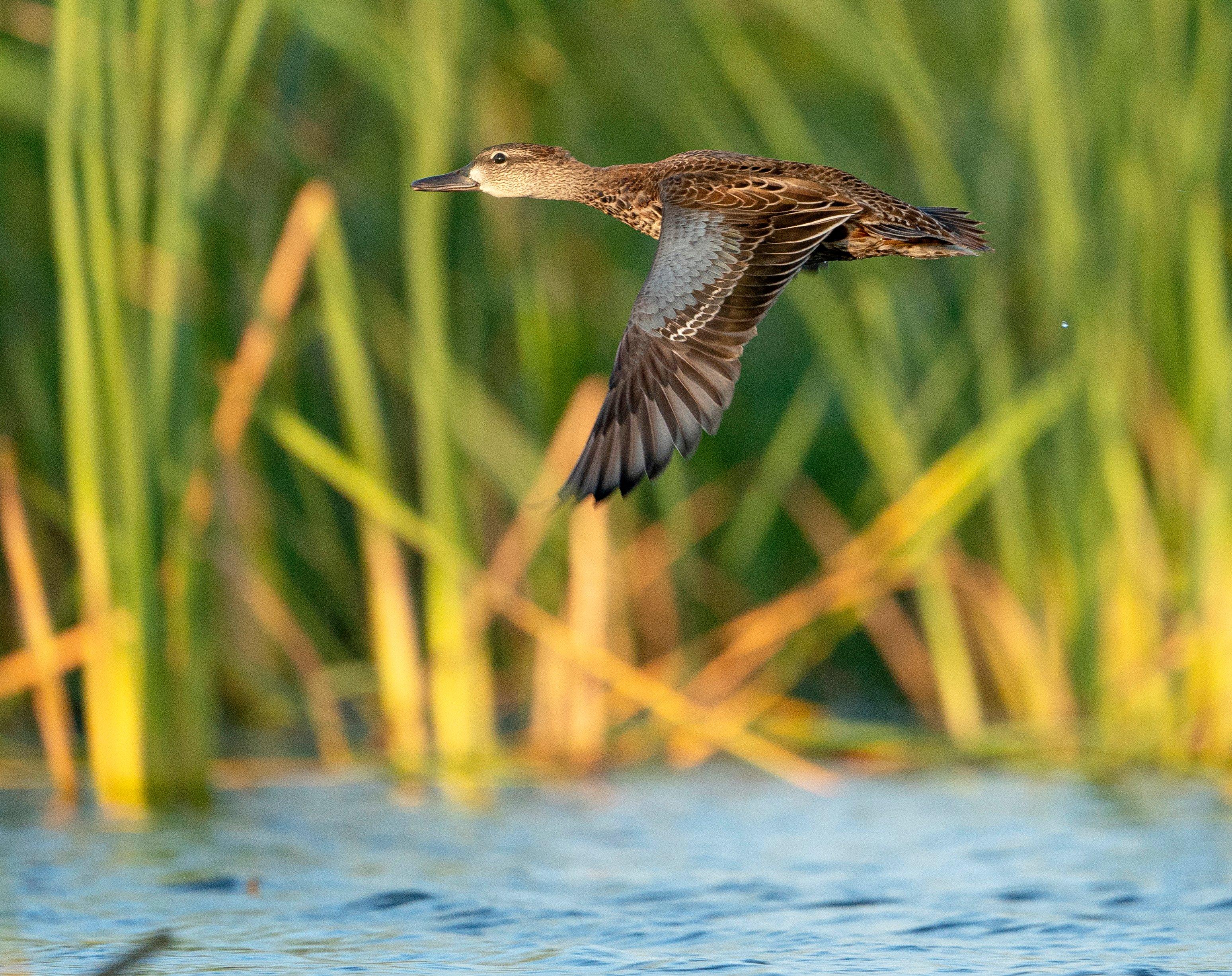
Teal season and other early hunts can produce great action. Plus, it’s just fun to knock the dust off your gear and enjoy duck hunting after a long off-season. Photo by Phil Kahnke.
Go-to tactic: The Coca-Cola Woods is classic flooded green timber. Ducks often cannot see down through the woods canopy to the water, so calling is critical for convincing birds to approach and finish. Realistic calling is important, but experts say knowing when to call is just as critical. Also, callers must learn how to read the reaction of ducks to see what type of calling they prefer. Often, veteran hunters call relatively hard at passing ducks until they gain their attention. When birds begin working a hole, callers shift to soft quacks and chuckles, perhaps hitting birds with lazy-hen highballs when they bank away. Then, they use quacks to bring ducks all the way to the water.
LATE DECEMBER FREEZE
A hard mid-winter freeze might spell trouble for folks who hunt green timber or rice-field pits, but it concentrates ducks and geese into remaining open water and can produce spectacular gunning. Often, that involves spring-fed or swift-flowing rivers.
“I like to use rivers when it’s real cold outside,” said Chad Belding, host of The Fowl Life. “They love the freshness of that moving water, duck and geese can get in there for privacy. And I love the way ducks and geese decoy in rivers, because they have to get skinny as they approach from downwind or along the river.”
Likewise, when the mercury plummets, Belding also hunts small farm ponds or gravel pits where he can saw a hole in the ice or keep a hole open overnight.
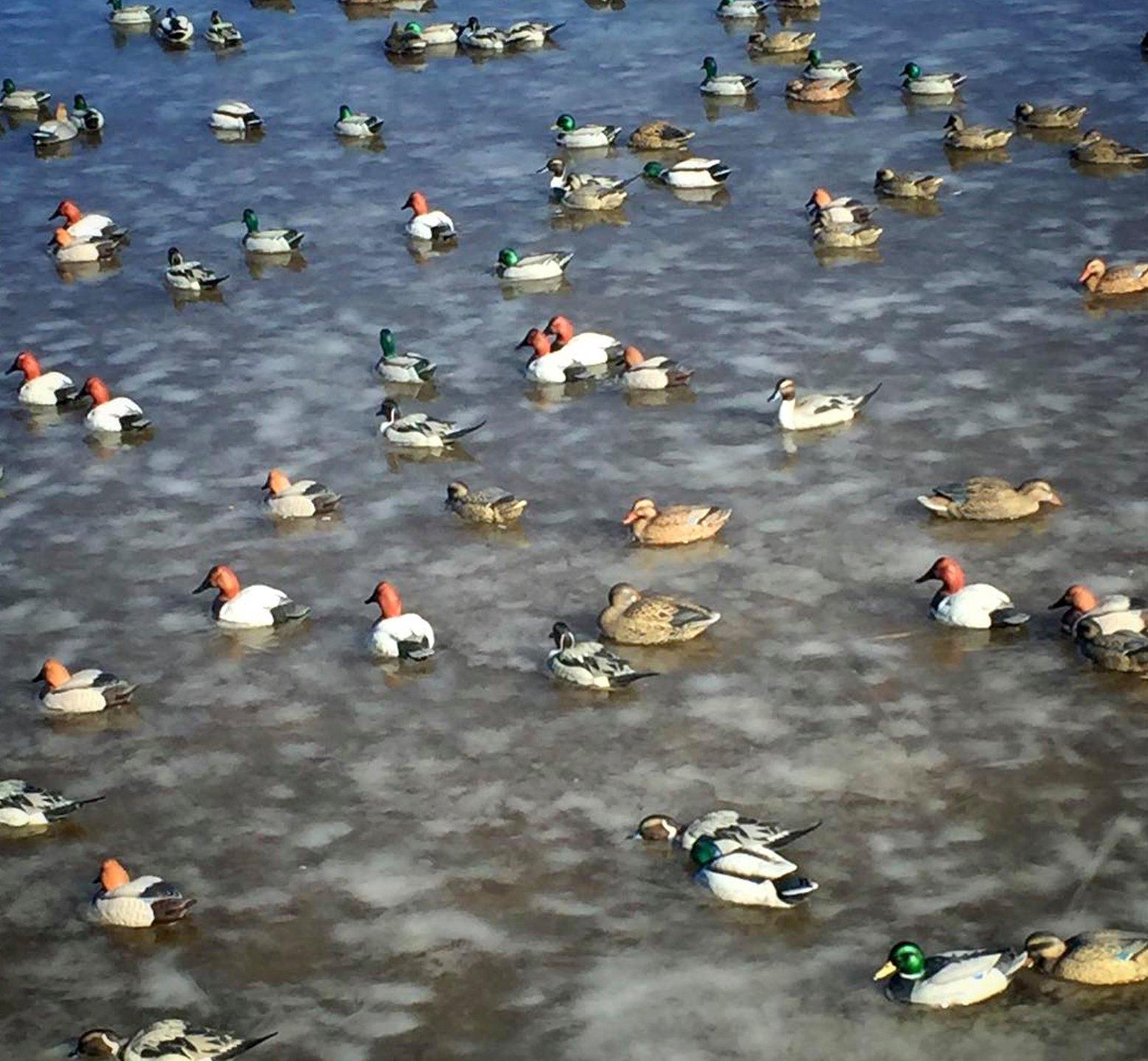
The first true cold front in October gets ducks moving. Set out a mixed spread in river backwaters, large marshes, prairie pothole-type lakes, or shallow impoundments for maximum attraction. Photo by Bill Konway.
“You’re running traffic on high groups when they’re transferring from feed to loaf or roost to feed or whatever,” he said. “And you can kill them in all parts of the day.”
Go-to tactic: Whether hunting a river sandbar or ice hole, Belding loves using lots of shell decoys, which give the appearance of birds trying to rest and conserve energy — common behavior during ultra-cold weather. He’ll line the shoreline with sleeper shells and full-bodies, often using Canada geese fakes to attract ducks and geese. Then he’ll throw a few floaters in the water and add a Mojo or two for motion. Flagging and calling also grab the attention of passing birds. “It’s hard for them to say no to that realistic spread when they see that open water,” he said.
A JANUARY THAW
Folks associate colder weather with better shooting, and that’s often true. But a January thaw can open up lots of fresh water for ducks, attracting birds that fled to rivers or migrated south during a freeze.
Eric Rinehart, of North Delta Outfitters in southeastern Missouri, said a thaw typically brings ducks that had been in Arkansas back north to his location at the edge of the Ozarks. And because it’s a fairly long haul to the next northward area with good habitat, birds often don’t go much farther.
“When it warms up, it gets to be the best hunting — hunting ducks on the thaw,” he said “They’re hungry, they want to eat, and they’re very vulnerable.”
Don’t Miss: Duck Hunting in Alaska
Go-to tactic: No secrets here. That late in the season, ducks have seen everything, so you must use realistic spreads, pay special attention to concealment and watch how ducks react to calling. Also, look for small, out-of-the-way areas that might attract skittish birds, such as tiny timber holes, or cuts in areas choked with willows or buck brush. Birds love breaking down into those spots, as they offer security and concealment.
CHOOSE YOUR DAYS
No one can guarantee that any of these days will produce. Likewise, it’s a safe bet that other seemingly random days might provide unexpectedly great shooting. You never know, so get out there. Use these general dates as a loose guideline, watch the weather and conditions, and put in some time to capture those magical moments when migrating ducks visit your area and buy into your spread.





